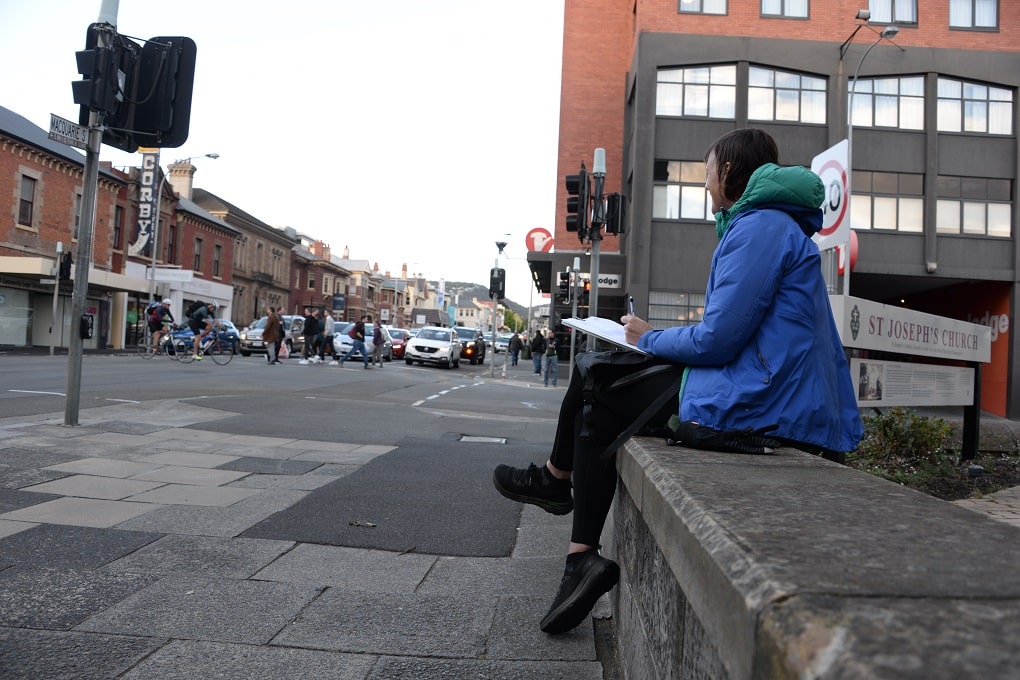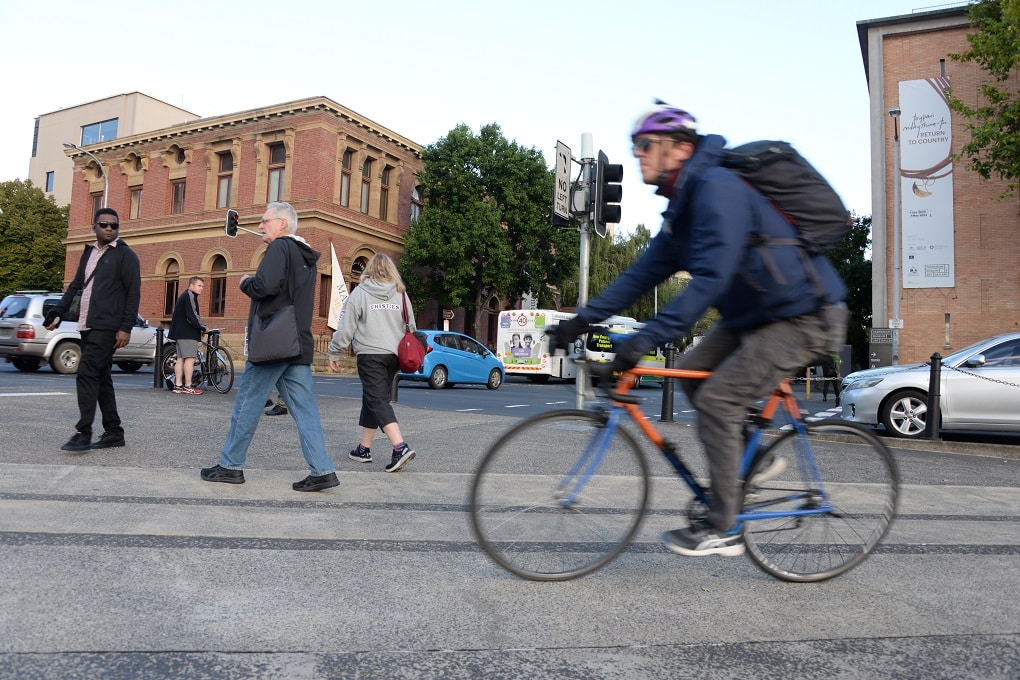The numbers for our Super Tuesday annual bike count in Hobart this year have been crunched and while some sites in the city centre are slowly rebounding, others remain flat three years after the COVID-pandemic hit the state.
Super Tuesday was held on Tuesday 7 March and while the morning was fine in southern sites, it was very windy on the eastern shore and cooler in northern sites. The day before had seen 5mm of rain and the forecast for the afternoon/evening was windy and rainy, which may have put some people off riding on that day.
This was on top of a cool and windy Super Tuesday in 2022 which saw a big dip in numbers. The 2022 count was also held during a COVID wave following Tasmania re-opening its borders, which may have seen more people opting to work from home or were away on sick leave.
The COVID-19 pandemic has created a marker for our Super Tuesday counts. Most sites had been steady or increasing until the pandemic hit, but since then the numbers for 2021, 2022 and now 2023 are well below previous years.
Some sites are seeing a semblance of a rebound, getting closer to the pre-COVID averages, while others are not recovering even after removing the 2022 nadir.
The Clarence sites should be considered in the context of very windy conditions which would have deterred many people from riding over the bridge: the Montagu Bay site where riders access the Tasman Bridge was 29, down from numbers in the 60s.

On the rebound
Sites closer to the city are showing greater recovery.
In Clarence, the Foreshore Trail and Howrah Road was 38, up towards the pre-COVID numbers and the Foreshore Trail at High Street it’s back up to 27 riders.
We only started counting at the Peltro Street and Intercity Cycleway intersection in Glenorchy in 2020 (pre-lockdown) but this year’s number of 53 riders is getting back to that initial 63.
Byron Street and Fitzroy Place in Sandy Bay registered 40 riders which is closer to usual numbers in the high 40s and low 50s and Molle and Collins streets, which includes Rivulet Path users, was 119, which is pretty close to previous numbers.
Other city sites are close to pre-COVID numbers: Bathurst and Harrington, Melville and Murray, Bathurst and Elizabeth, and Murray and Warwick.
The Rose Garden Bridge seems to be holding its numbers, with 83 riders, slightly down from the 95 registered in the first count after the bridge had opened (which was during the 2020 lockdown).

Still flat
Other sites are not showing any significant recovery of numbers.
In Clarence, the Foreshore Trail at Kangaroo Bay which consistently saw rider numbers in the high 50s pre-COVID was only 28 this year, the same for the trail at Topham Street in Lindisfarne which this year was down to 25 after numbers in the low 50s.
In Glenorchy, Elwick Road and the Intercity Cycleway is down to 64 after numbers closer to 100 in previous years and in Claremont it’s crashed to 9 after years in the high 20s.
Channel Highway at the Taroona primary and high schools has seen numbers crash from the 90s down to 46.
Sandy Bay Road numbers have also collapsed, with most sites this year sitting at around half the numbers recorded pre-COVID. There may be some impact on numbers along here from the university moving several schools into the city centre.
The windy bridge conditions may have affected some city sites that carry these riders: Argyle and Davey streets were down to 121 riders, with the usual number being in the low to mid 200s, and Morrison and Murray was 143, down on the usual low 200s.
The Intercity Cycleway sites were down on previous years. At Bay Road New Town it was 103 riders, which is half of normal numbers, and 145 at the Tasman Bridge, which again is half the normal tally.

Female riders
The good news is that while numbers overall have been down since the COVID-19 pandemic hit, the percentage of female riders doesn’t look like it’s decreased greatly.
At some sites the number of women riding is notable: Elizabeth and Collins streets – 26 out of 55 riders; Molle and Collins streets – 53 of 119 riders; and Macquarie Street at the Southern Outlet – 37 of 81 riders.
What does this all mean?
At this stage we need a few more years to see the full impact of COVID-19 on commuter bicycle numbers, especially as we’ve had two years of poor La Nina-influenced weather.
There are obviously more people working from home or working partly in the office and partly at home who may be avoiding the traditional morning commute times. These people could still be riding but coming into the office later or riding closer to home rather than in and out of the city. Instead of ‘peak’ commuting times it means more riders spread throughout the day and spread over greater distances.
This is likely to be a long-term change which means we will need more counts during other hours of the day to get a better understanding of the use of cycling treatments and infrastructure. Traditional volunteer counts can be supplemented with new technology which used AI software to count riders, scooters and other users from footage from dedicated cameras or permanent CCTV cameras.
What do you think?
If you have other theories why you think numbers may have declined at certain intersections across greater Hobart, let us know. Email us at tasoffice@bicyclenetwork.com.au.


